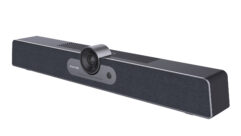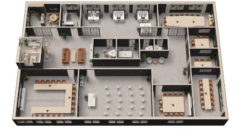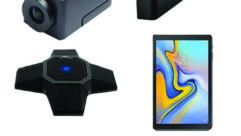Successful Huddle Room Collaboration
Nov 11, 2014 10:12 PM, Tim Root
In an effort to optimize time spent communicating and brainstorming, organizations have begun shifting away from traditional cubicle and conference room setups, instead moving toward huddle rooms and casual workspaces. This trend reflects younger generations’ comfort with less-formal meetings within a looser environment in which most people already carry the tools they need— smartphones, tablets, and laptops—to gather quickly in small teams.
Enterprise hardware solutions have evolved a great deal, giving users ever more cost-effective ways to benefit from integrated audio, video, and data in huddle spaces. The need for intelligible audio, however, has not changed. Whether in the conference room, classroom, or huddle space, high-quality audio remains critical to successful communication and collaboration. Without it, nothing can be accomplished. In huddle spaces, which typically are outfitted with tables and soft furniture that can be easily reconfigured, participants tend to be more dynamic. They may choose to sit, stand, or move about the room, and thus it can be challenging to implement an audio solution that addresses all of these scenarios.
Two approaches accommodate this new way of working, and each is based on the general design of a huddle room. The first speaks to those huddle spaces that are similar to conference rooms, equipped with a computer dedicated to data sharing and videoconferencing but with soft, movable walls and chairs around a table in a more open space. This setting requires a low-maintenance, easy-to-use setup that will afford 100 percent success. The solution must ensure good audio pickup and reproduction for both standing and seated participants, whether working up at the whiteboard or sitting on a sofa a dozen feet away.
The USB speakerphone solution has been widely and successfully adopted in this environment, as today’s better quality systems provide great audio fidelity and mic pickup, with the volume to cover a fairly substantial space. To address this, Revolabs even put both a tweeter and a regular speaker into its USB speakerphone system, in turn enhancing intelligibility on both sides of the equation. Four embedded wideband microphones with integrated echo cancellation ensure full 360-degree capture of conversations.
The second approach is ideal for even less formal huddle spaces, such as a gathering space carved out of a hallway and set up much like a living room, possibly with a coffee machine, as well as a whiteboard or smartboard. While some attempt to use a mic array built into the camera at the front of the room—and a USB speakerphone could also work in this example—the changing and greatly varying distances between participants makes wireless microphones a far better option. These mics can be set up anywhere, such as the arm of the sofa or on the coffee table, and a wearable model can be used for the person working at the whiteboard. Even in a dynamic and unpredictable setting, wireless mics provide complete flexibility in picking up all participants’ voices. In short, there is nothing better than attaching a wireless mic to a person for optimal voice pickup.
The combination of better pickup and improved fidelity of audio solutions result in better intelligibility, which in turn is essential to preventing audio fatigue over longer periods of time. Whereas traditional telephony solutions use 4kHz bandwidth and Skype uses 7kHz, today’s ultra-wideband solutions use advanced formats such as the Opus codec to offer very rich 16kHz fidelity. Across all variety of languages, this degree of fidelity boosts the intelligibility factor significantly.
The experience of interacting with these solutions is proving to be much more enjoyable for participants, not only because of greater audio fidelity, but also because there are very useful and intuitive applications for PCs—sometimes integrated into hardware appliances— that provide all the tools a novice would need to use the system. Dropping prices also are lowering barriers to quality solutions for communication and collaboration. All of these factors are driving the success and popularity of a new generation of meeting spaces.
Tim Root is chief technology officer and executive vice president of new business development for Revolabs, a leading provider of audio solutions for unified communications and collaboration applications. He can be reached at [email protected].










